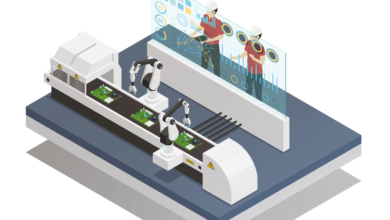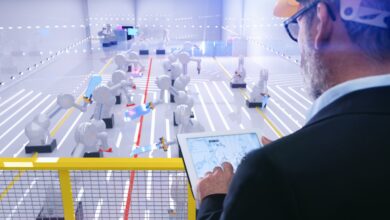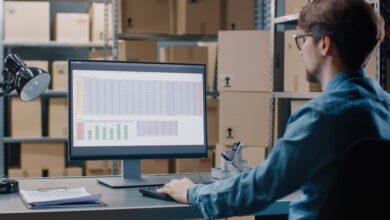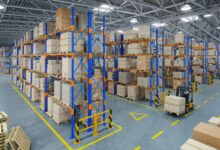Digital Twin Technology for Supply Chain Optimization

Readers who follow our blog are probably familiar with digital twin technology. This concept refers to a virtual replica of hundreds of assets, warehouses, logistics, material flows, and inventory positions, allowing you to simulate your performance under every scenario, including analyzing all complexities causing loss of money and operational risks for your company.
Building a Resilient Supply Chain
This stress test was inspired by the consequences of the COVID-19 pandemic. During this period, according to a study by the Institute for Supply Management (ISM), COVID-19 disrupted 75% of global supply chains. ISM found that 44% of global companies did not have emergency plans for disruptions in the supply chain originating from China. Digital twins can help create emergency plans in such situations.
However, creating an emergency plan to reduce uncertainty’s impact on businesses is just one application of digital twin technology. In this article, we will explore three effective applications of digital twins to proactively improve supply chain performance: network, process, and inventory optimization.
Supply Chain Network Optimization: Balancing Service and Cost
Even in “normal” times, companies can face unexpected demand changes, and if supply chain networks are not prepared to meet these changes, the company can be adversely affected.
By using a digital twin, you can assess how changes in supply and demand will affect the network, or in other words, how they will affect the physical locations of the supply chain and the logistics system used to deliver products and services to end customers. This allows you to determine if you have the right facilities and transportation capacities in the right place and quantity. For example, you can plan steps to effectively cope with an increase in sales of a particular product or to deal with a material shortage from a key supplier. Or if you are launching a new product and need to add new capacity points (production, storage, transportation that may be needed), a digital twin can help you model which points need to be added and how to bring this new product to market. This technology can also help you decide how to shrink your supply chain network. For example, you can learn which facilities can be closed without harming operations to respond to slowing demand or to reduce overall logistics costs.
More importantly, digital twin technology is valuable in understanding the impact of network changes to balance cost and service levels to meet customer expectations. Additionally, you can see how your current network design affects your carbon footprint and CO2 emissions, allowing you to meet sustainability goals without sacrificing cost and service.
Process Optimization: Increasing Efficiency and Productivity
Over time, processes in many companies have become increasingly complex, leading to decreased efficiency and increased costs. A digital twin can help you deeply understand and visualize bottlenecks, time, waste, and inefficiencies affecting the organization’s performance and allows you to see the results of planned improvements in a virtual environment. This may include eliminating some steps in a production line through automation to reduce the cost and improve the benefit of a product, reviewing the production process to reduce costs, or redesigning picking and packing activities in the warehouse to minimize handling. The benefit of improvements designed and optimized in the free experimental environment provided by the digital twin is higher productivity, efficiency, and lower operating costs when implemented correctly in real life.
Inventory Optimization: Right Products, Right Cost, Right Location!
Inventory is an inevitable cost that must be constantly managed for most companies. Deciding what, where, and how much to stock to maximize customer service at the lowest total cost is, therefore, a very important and never outdated problem. However, conducting reasoning with all factors involved in this calculation, especially for companies with hundreds of thousands of SKUs and customers spread across many locations and geographies, will be a challenging process. And the more variability in demand, the more inventory you will need to meet service levels.
A digital twin is also very suitable for solving the inventory problem. By calculating demand forecasts to improve replenishment processes, it allows the handling of both “single-level” challenges (such as optimizing inventory in a single warehouse) and “multi-level” challenges (such as optimizing inventory across the entire network). This allows you to change inventory levels according to demand to prevent stockouts while minimizing overall costs.
A digital twin is a powerful tool that can benefit any supply chain in any industry. It allows you to model solutions for your existing, functioning supply chain without any risk and progress with optimal solutions that guarantee tangible results.
In the coming days, we will explore how we use digital twin technology, how they work in practice, and how our customers use digital twins to optimize their networks, processes, and inventory with free online seminars we will organize. If you want to accompany us on this exploration journey, you can subscribe to our newsletter or fill out our information request form on our page.





